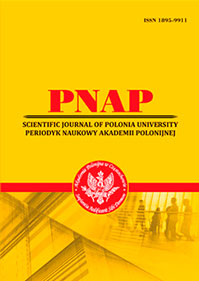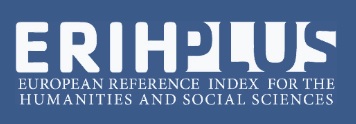МІЖ СХОДОМ І ЗАХОДОМ: ВИКЛИКИ ПЕРЕКЛАДУ 千と千尋の神隠し (SPIRITED AWAY) АНГЛІЙСЬКОЮ, ФРАНЦУЗЬКОЮ, ПОЛЬСЬКОЮ ТА УКРАЇНСЬКОЮ МОВАМИ
Анотація
У статті досліджуються особливості перекладу японського анімаційного фільму Spirited Away (2001) режисера Хаяо Міядзакі англійською, французькою, польською та українською мовами. Основну увагу зосереджено на складних міжкультурних викликах, які постають перед перекладачем для відтворення семіотично насиченого та культурно-специфічного тексту. Аналіз охоплює переклад власних назв, форм ввічливості, культурно маркованих понять, а також фольклорних та релігійних елементів, що є важливими для побудови унікального наративного всесвіту.Особлива увага приділяється трансляції мовних ознак, які формують характер персонажів та їхню соціальну ієрархію: використання японських почесних суфіксів, форм звертання, ступенів ввічливості, а також варіативності регістру й тональності в діалогах залежно від віку та соціального статусу персонажа. Розглянуто випадки зниження або нейтралізації стилістичних особливостей мовлення у перекладах, що впливає на сприйняття характерів.Також аналізується поняття так званого «порожнього центру» – характерної риси японського наративу, що передбачає уповільнений темп, паузи, емоційну тишу та відсутність зайвого пояснення. Цей наративний прийом часто не має прямих відповідників у західній традиції і стає викликом для перекладача, в результаті чого в перекладі тиша інколи заповнюється звуками та/або словами, щоб задовольнити очікування західного реципієнта.Окремо проаналізовано вибір між стратегіями одомашнення та очуження у кожній мовній версії з урахуванням локальних перекладацьких традицій і цільової аудиторії. Дослідження поєднує перекладознавчий та культурологічний підходи й демонструє, як переклад фільму Spirited Away балансує між східною специфікою й очікуваннями західного глядача, а також як різні перекладацькі рішення змінюють інтерпретацію твору у міжкультурному просторі. Зокрема, зроблено висновок, що для всіх проаналізованих перекладів характерною є стратегія одомашнення, що свідчить про культурну близькість європейських мов одна до одної. Втім англомовна версія фільму значно інтенсивніше вдається до одомашнення, що пов’язано з впливом студії Disney і прагненням адаптувати текст під прогнозовані очікування англомовного глядача. Натомість французька, українська та польська версії демонструють більшу відкритість до очуження, зберігаючи багато елементів оригінальної культури без спроб їх пояснити або спростити.
Посилання
2. Asakura K. Translating Cultural References in Japanese Animation Films: The Case of Spirited Away. Translation Matters. 2019. Vol. 1(1). P. 61–81.
3. Athira A. The Imagined World of Chihiro: A Psychoanalytic Study of Miyazaki’s Spirited Away. International Journal of Humanities and Social Sciences Review. 2023. Vol. 3(1). P. 1–8.
4. Barros-Grela E. Cultural Writings of the Fairy Tale: a Spatial Reading of Three Studio Ghibli Productions. In Сontemporary Fairy-Tale Magic. Leiden, The Netherlands : Brill, 2019. Р. 262–272.
5. Barthes R. The Empire of Signs. New York : Noonday, 1982. 110 p.
6. Bugrov M., Khamitov N., Krylova S., Berezhna M., Drotenko V. Philosophical Understanding of Cultural Identity in a Globalised World. Synesis. 2025. Vol. 17. No. 1. P. 102–125.
7. Carter L. Marketing anime to a global audience: A paratextual analysis of promotional materials from Spirited Away. East Asian Journal of Popular Сulture. 2018. Vol. 4(1). Р. 47–59.
8. Denison R. The global markets for Amine: Miyazaki Hayao’s Spirited Away. In: A. Philips & J. Stringer (Eds.). Japanese cinema: Texts and contexts. London and New York : Routledge, 2007. P. 308–321.
9. Lim T. W. Spirited Away: Conceptualizing a Film-Based Case Study through Comparative Narratives of Japanese Ecological and Environmental Discourses. Animation. 2013. Vol. 8(2). P. 149–162.
10. Miyazaki Hayao (宮崎駿). Sen to Сhihiro no kamikakushi (Spirited Away). Japan : Studio Ghibli, 2001.
11. Napier S.J. Matter Out of Place: Carnival, Containment, and Cultural Recovery in Miyazaki’s Spirited Away. The Journal of Japanese Studies. 2006. Vol. 32(2). P. 287–310.
12. Noviana F. Moral Values in Hayao Miyazaki’s Spirited Away: A Sociology of Literature Approach. Humanika. 2020. Vol. 27(1). P. 23–32.
13. Papastavros V. Miyazaki’s monstrous mother: a study of Yubaba in Studio Ghibli’s Spirited Away. Feminist Media Studies. 2021. Vol. 23(3). P. 1157–1172.
14. Sanders L. Subtitling, Semiotics and Spirited Away. Journal of Audiovisual Translation. 2022. Vol. 5(1). P. 1–21.
15. Swale A. Miyazaki Hayao and the Aesthetics of Imagination: Nostalgia and Memory in Spirited Away. Asian Studies Review. 2015. Vol. 39(3). P. 413–429.
16. Viñuales Sánchez A. A Reading on Spirited Away through modern global symbolism: a Menippean satire animation. Сon A de Animación. 2025. Vol. 20. P. 168–187.
17. Wu Ch.-I. Hayao Miyazaki’s Mythic Poetics: Experiencing the Narrative Persuasions in Spirited Away, Howl’s Moving Сastle and Ponyo. Animation. 2016. Vol. 11(2). P. 189–203.
18. Yama M. Spirited Away and its depiction of Japanese traditional culture. In: Luke Hockley (Ed.). The Routledge International Handbook of Jungian Film Studies. London and New York : Taylor and Francis, 2018. P. 254–262.

Ця робота ліцензується відповідно до Creative Commons Attribution 4.0 International License.
 ISSN
ISSN 


.png)




